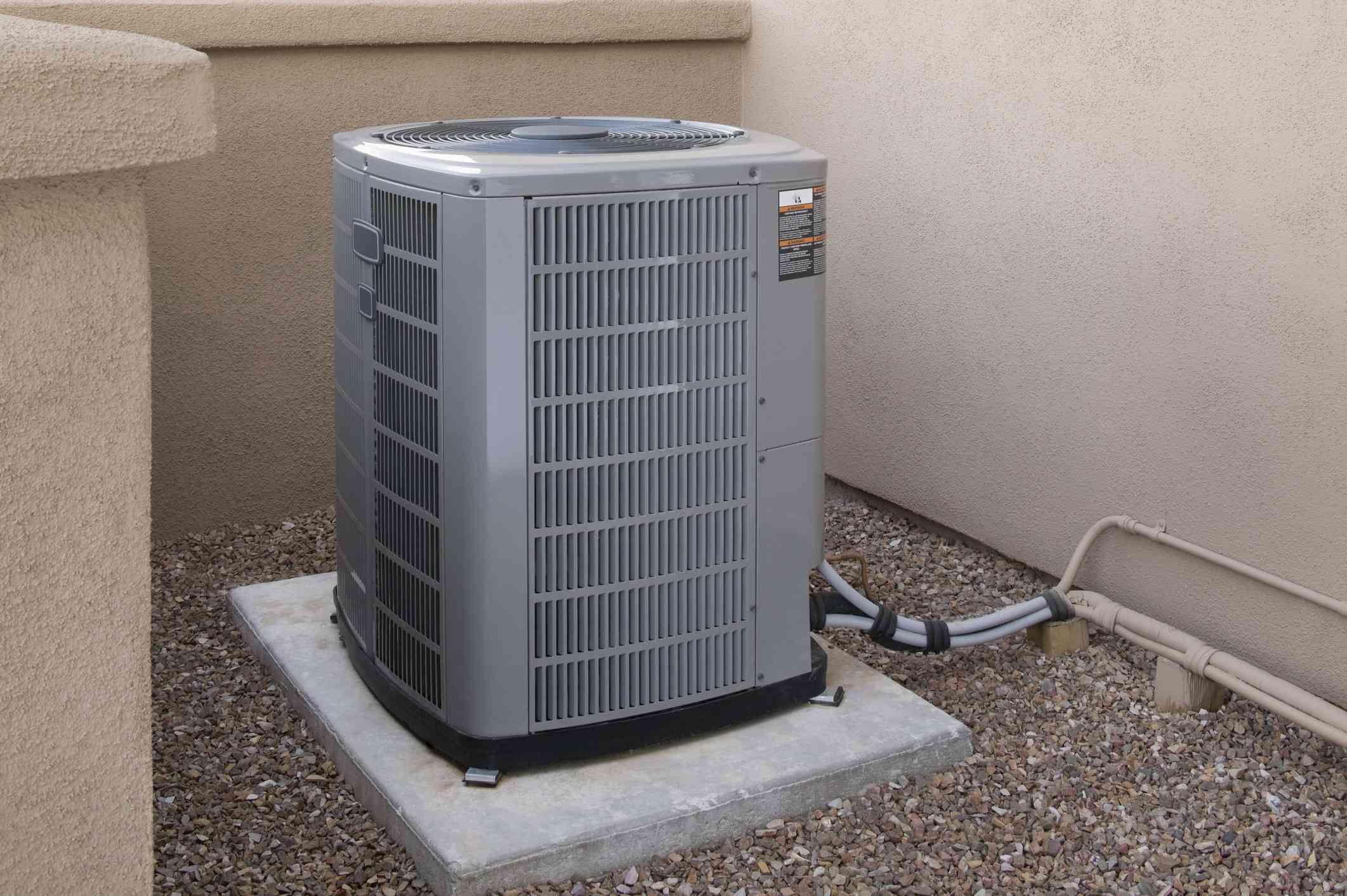Central Air Conditioning Systems Construction and Working:
The central air conditioning systems serving the needs of large building or spaces are generally called the year-round air conditioning systems. They have a cooling capacity of 25 tonnes and circulate about 300 m3/minute of conditioned air. Depending upon its type such a central air conditioning systems may contain some of the following equipments :
- Heating coils supplied with steam or hot water.
- Cooling and dehumidifying coils—both for chilled water and for direct expansion of the refrigerants.
- Blower and driving motor.
- Sprays for cooling and dehumidifying or for washing the air.
- Air-cleaning equipment containing filters, electrostatic precipitators, odour removing equipment and germicidal lamps.
- Various types of control devices.
The devices assembled as an air-conditioning unit are housed and enclosed in sheet metal housings or plenums. The plenum is usually covered with insulating board over its entire outer surface and is stoutly braced. The refrigeration condensing units and steam or hot water boilers for air conditioning in this system are either located in the same room or in the basement or in an adjoining room.
The various factors affecting the choice of the equipment for design and installation of the central air conditioning systems are capacity of the plant, filters and mixing plenums, refrigeration and heating equipment, insulation, noise and vibration.
1. Capacity of the plant: For each 30 m3/minute of air handled, heating and cooling coils handling air must provide 0.185 m2 of face area (four row coil) at face velocities of about 150 m/minute. One of the limiting factors influencing the design of this system is the physical size of the coil and filter banks.
The horizontal space between flows of a building is usually kept between 3.65 and 4.87 metres because the operating expenses of the system depends upon the floor area utilised. Thus for a single air conditioning unit a practical limit of 1,200 m3/minute or 100 tonnes of cooling capacity is set. For the spaces or buildings requiring more than this capacity two or more zones may be planned with an air conditioning system installed to handle each unit.
The extent of the zoning to be specified is generally determined by the nature of the building. A theatre or departmental store installation requiring spaces of large cubical structure are most economically conditioned by only a few (preferably one) central station air conditioning units. Office buildings, schools, colleges and similar buildings requiring many rooms necessitate greater zoning. Air conditioning units of 300-900 m3/minute are usually employed. Considering all the factors discussed above, it seems more economical to supply chilled water, hot water, steam or refrigerant through pipes to various smaller air conditioning units than erect massive supply and return ducts for serving an extremely large unit.
2. Filters and mixing plenums: Before filtering, the return air and fresh outside air should be brought into a plenum for proper mixing. The amount of outside air to be introduced is usually controlled by motorised dampers. Depending upon the nature of occupancy, the dampers are controlled by a thermostat to admit less outside air during extreme outdoor temperature or by smoke and odour sensing devices to increase the amount of ventilation air according to requirement in the conditioned space.
Vertically assembled and cleanable types of filter banks are generally used. For central air conditioning systems of less than 300 m3/minutes capacity disposable filters are used. The various types of filters and air cleaning devices commercially available accomplish all the following cleaning operations.
- Removal of solid particles of visible size (dust, dirt, lint, pollen, cinders etc.)
- Removal of particles of microscopic size (smoke, haze, etc). Electrostatic precipitators are used for this purpose.
- Proper control of odour— for this purpose activated charcoal is usually used.
- Killing of bacteria—for this purpose germicidal lamps and certain chemicals are used.
3. Refrigeration and Heating Equipment: The design of central air conditioning systems is greatly affected by these equipments. The direct-expansion (DX) refrigerant coils and hot water coils are unusually employed in systems requiring only one or two zones. The air conditioning units in these systems are generally located close to the cooling and heating equipments. The chilled eater is used and circulated as a cooling medium in the air conditioning coils for many zones at remote locations which are served by a single cooling and heating plant. The heating medium is generally the hot water or steam. For serving the various zones water is generally pumped to the mechanical rooms.
4. Insulation: If the supply ducts are not running through the conditioned spaces, they should be properly insulated. Generally 25 mm thick insulating board is used to insulate the outer surface of the entire housing for the central air conditioning systems unit. In order to prevent the heat losses and gains, all the steam, hot water, chilled water and suction refrigerant piping should be properly insulated.
5. Noise and Vibration: The noise and vibrations produced in the air conditioning units are very important factors for considerations while designing and selecting equipments. The undue noise and vibrations are considered undesirable.
